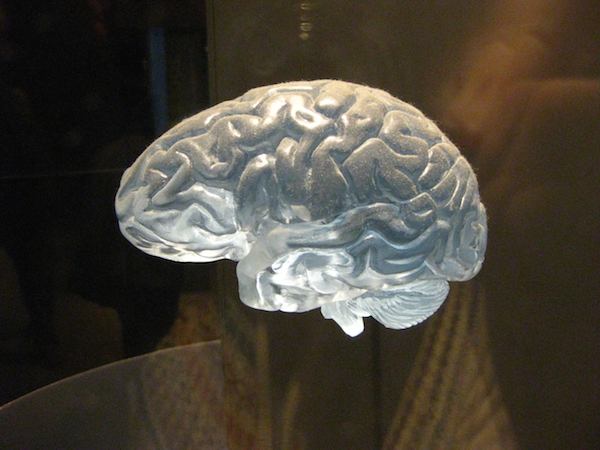
[Image above] Credit: Kari; Flickr CC BY-NC-ND 2.0
Doctors at Mentior Hospital in Boston, Mass., are taking glass materials to places they’ve never been before—inside a patient’s skull.
Thanks to advancements in glass technology that allow the material to store more data than ever before, medical scientists have devised a novel glass data storage organ to replace humans’ most advanced asset.
The storage technique writes 5-D data into a 3-D borosilicate glass brain replica, which can then be implanted into a patient’s skull after removal of any remaining organic matter.
Surgeons at the hospital now report that they have successfully implanted the new glass organ into an unsuspecting test subject.
“The surgery went better than we could have expected”, says brain surgeon Will U. Bleebmie. “Although we don’t think the patient actually understood what we were going to do before the surgery, he couldn’t be any happier now that he has the glass brain.”

Inside the patient’s empty skull before he received the glass brain implant (left), as compared to a normal individual’s brain (right). Credit: Feuillet et al./The Lancet
Although transplanting and replacing various other body parts and organs have become somewhat commonplace in today’s medical field, the brain has remained a challenge because of the materials requirements for such vast data storage.
“This is a major milestone in glass upgrade technology—this patient went from an IQ of 43 before the surgery to an IQ of 300 after implantation of the glass brain,” Bleebmie says. “That’s a 5000% improvement in IQ score, which is just unheard of. Although we don’t yet know how the glass brain will hold up long-term, I’m going to recommend everyone consider getting a glass brain upgrade.”
Because that ability to store data in glass boasts a capacity of up to 360 TB/disc, the patient now has unprecedented data storage abilities, researchers say.
“He is now essentially living within the Matrix, able to input information directly into his skull at any point in time,” says Lyon Auther, neuro-material scientist and inventor of the glass brain. “This milestone is a game-changer.”
The medical team will monitor the patient closely for the next 6–9 months to ensure the newly implanted glass brain doesn’t suffer any fractures that could negatively affect the surgery’s results—and that might be challenging, given the patient’s active lifestyle.
“He’s quite the avid extreme sportsman—enjoys base-jumping off skyscrapers and traversing steep mountainous terrain,” explains Auther. “We don’t yet understand the effects of cranial trauma involving a glass brain, but we’re optimistic that recovery for such injuries would be less invasive and wouldn’t pose as high of a life-threatening risk. It will be interesting to see where we end up at this time next year.”
The patient says he wishes to remain anonymous because of stupid things he has done in his life prior to the recent intelligence upgrade.
Happy April Fool’s Day! Did we fool you?
Author
April Gocha
CTT Categories
- Biomaterials & Medical
- Glass


